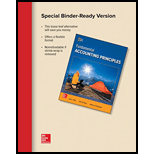
Concept Introduction:
Relevant or avoidable costs and Irrelevant or unavoidable costs –
The major decisions that a business has to take during its operations include elimination of segment, buy or make a product, to sell at scrap or rework on the product, to accept special offers etc. All these decisions are taken on the basis of the costs involved. There are two types of costs –
1. Relevant costs or avoidable costs – these costs can be defined as the costs that can be avoided if we choose over option over the other. Example of relevant costs are, direct material, direct labor, avoidable fixed costs etc.
2. Irrelevant costs – these costs can be defined as the costs that cannot be avoided in any of the options available or the costs which have been already incurred like sunk costs. Examples of irrelevant costs are unavoidable fixed costs, or the costs which have been already incurred
To determine:
Should the division be eliminated or not.
Want to see the full answer?
Check out a sample textbook solution
Chapter 25 Solutions
Loose Leaf for Fundamental Accounting Principles
- HELParrow_forwardIf blurr image please comment i will write values. please dont Solve with incorrect values otherwise unhelpful.arrow_forwardJones Co. had $61,500 in sales during 2025. During the year, Jones purchased $18,400 in inventory. The company began the year with $4,100 in inventory and ended the year with $1,300 in inventory. In addition, during 2025, Jones received a prepayment of $2,500, which was correctly classified as unearned revenue. What was Jones's gross profit during 2025? A. $38,000 B. $40,300 C. $39,600 D. $42,100 E. None of the abovearrow_forward
- I need the correct answer to this financial accounting problem using the standard accounting approach.arrow_forwardQuine Industries has fixed costs of $600,000 and variable costs are 60% of the selling price. To realize profits of $250,000 from sales of 500,000 units, the selling price per unit: 1. Must be $2.60 2. Must be $3.50 3. Must be $4.25 4. Is indeterminablearrow_forwardAccounting with solutionarrow_forward

 AccountingAccountingISBN:9781337272094Author:WARREN, Carl S., Reeve, James M., Duchac, Jonathan E.Publisher:Cengage Learning,
AccountingAccountingISBN:9781337272094Author:WARREN, Carl S., Reeve, James M., Duchac, Jonathan E.Publisher:Cengage Learning, Accounting Information SystemsAccountingISBN:9781337619202Author:Hall, James A.Publisher:Cengage Learning,
Accounting Information SystemsAccountingISBN:9781337619202Author:Hall, James A.Publisher:Cengage Learning, Horngren's Cost Accounting: A Managerial Emphasis...AccountingISBN:9780134475585Author:Srikant M. Datar, Madhav V. RajanPublisher:PEARSON
Horngren's Cost Accounting: A Managerial Emphasis...AccountingISBN:9780134475585Author:Srikant M. Datar, Madhav V. RajanPublisher:PEARSON Intermediate AccountingAccountingISBN:9781259722660Author:J. David Spiceland, Mark W. Nelson, Wayne M ThomasPublisher:McGraw-Hill Education
Intermediate AccountingAccountingISBN:9781259722660Author:J. David Spiceland, Mark W. Nelson, Wayne M ThomasPublisher:McGraw-Hill Education Financial and Managerial AccountingAccountingISBN:9781259726705Author:John J Wild, Ken W. Shaw, Barbara Chiappetta Fundamental Accounting PrinciplesPublisher:McGraw-Hill Education
Financial and Managerial AccountingAccountingISBN:9781259726705Author:John J Wild, Ken W. Shaw, Barbara Chiappetta Fundamental Accounting PrinciplesPublisher:McGraw-Hill Education





